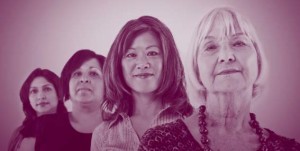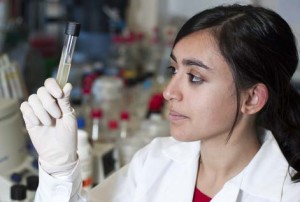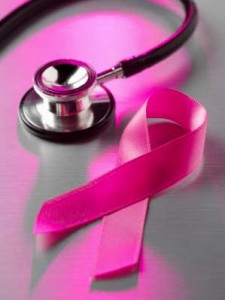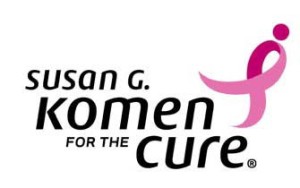 While white women in the United States are more likely to be diagnosed with breast cancer, certain populations – especially African-American and Hispanic women – are more likely to be diagnosed with late-stage breast cancer and less likely to survive. Even worse, African-American women are more likely to be diagnosed with stage IV cancer, the most advanced stage.
While white women in the United States are more likely to be diagnosed with breast cancer, certain populations – especially African-American and Hispanic women – are more likely to be diagnosed with late-stage breast cancer and less likely to survive. Even worse, African-American women are more likely to be diagnosed with stage IV cancer, the most advanced stage.
A recent study which included more than 100,000 women from 18 U.S. cancer registries found that African-American and Hispanic women were 30 – 60 percent more likely to be diagnosed with late-stage breast cancer than non-Hispanic white women.
“We saw a consistent pattern of late diagnosis and not receiving recommended treatment for African-American women across all breast cancer subtypes,” states lead study author Lu Chen, a researcher at the Fred Hutchinson Cancer Research Center at the University of Washington School of Public Health.
With breast cancer specifically, the advances the U.S. has made in education, treatment, and post-cancer care over the past few decades haven’t translated into better survival rates across racial lines. Instead, white women have a 92 percent five-year survival rate, while the survival rate for African-American women is about 79 percent.
Behind the Numbers
This discrepancy may be driven by many factors. Advances in breast cancer survival rates are more noticeable for early-stage disease and for certain types of cancer, and minority women are more likely to be diagnosed with aggressive types of cancer at later stages. However, according to Chen, socio-economic factors may play a major role in access to and quality of health care and treatment. In Chen’s study, African-American and Hispanic women were less likely to receive the full course of recommended treatments.
A large percentage of people living in poverty are minorities, and studies indicate that health is often patterned strongly along both socioeconomic and racial/ethnic lines, suggesting links between social advantage and health.
“Financial status directly impacts health status,” says Dr. Karen Winkfield, radiation oncologist and assistant professor in the department of radiation oncology at Harvard Medical School. “If you don’t have the resources, you’re not going to be able to care for your health in the appropriate way.”
People need education and information in order to make good personal health decisions. Education is also a factor in making health changes on a community level. It takes education and strong advocacy to effectively make healthy changes in the community – whether to effectively lobby local grocery stores to carry fresh fruits and vegetables or to prohibit corner stores from selling tobacco products to youth.
Challenges in Research
 Many of the same population groups that experience cancer health disparities are also significantly underrepresented in cancer clinical trials. As the issue of disparities has gained more attention in cancer research, it has produced more opportunities for collaboration among researchers. One such collaboration involves efforts to increase the diversity of participants in clinical trials, which can ensure that trial findings are applicable to a broader patient population.
Many of the same population groups that experience cancer health disparities are also significantly underrepresented in cancer clinical trials. As the issue of disparities has gained more attention in cancer research, it has produced more opportunities for collaboration among researchers. One such collaboration involves efforts to increase the diversity of participants in clinical trials, which can ensure that trial findings are applicable to a broader patient population.
According to the National Cancer Institute, developing ways to improve access to quality cancer care continues to be one of the most daunting challenges facing the cancer research community. Access to care is affected by many socioeconomic and policy-level factors, and is a barrier that researchers and the public health community must face. Some of these factors include lack of access to health care facilities, state and federal policies on health insurance, and hospital and physician payment rules.
Beyond access, it can be difficult to determine the complex mix of factors that may contribute to differences in disease outcomes among different racial groups, including environmental, behavioral, cultural, and biological factors. Researchers are working to overcome these hurdles and to design interventions that can address the various drivers of disparities in different population groups.
Closing the Gap
Small changes are underway that may make a dent in these disparities. The Affordable Care Act is projected to decrease the number of uninsured Hispanic patients – the highest uninsured rate among any ethnic group – from 31 percent to 19 percent, and African-American patients from 20 percent to 11 percent by the year 2016.
to 11 percent by the year 2016.
The Maryland Department of Health and Mental Hygiene receives a cooperative agreement from the Centers for Disease Control and Prevention (CDC) under the National Breast and Cervical Cancer Early Detection Program to facilitate the Maryland Breast and Cervical Cancer Screening Program (BCCP). The purpose of this program is to increase breast and cervical cancer screening among uninsured, low income women statewide, to provide follow-up to diagnosis, to carry out public and professional education, to assure the quality of screening services, to monitor cancer rates in Maryland, and to carry out evaluation of these programs.
If you are unable to afford breast cancer screening services, please contact the St. Mary’s County Breast and Cervical Cancer Screening Program. Program staff will navigate eligible, underinsured women through services to receive clinical breast exams, mammograms, and treatment at no cost to them.

